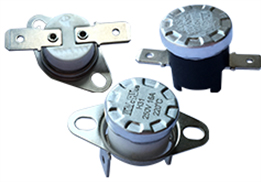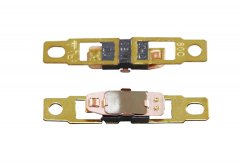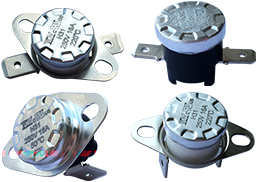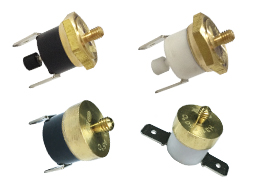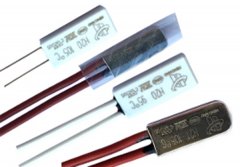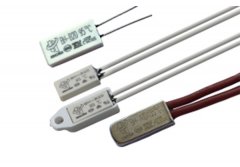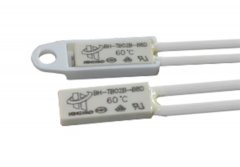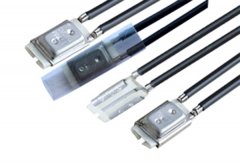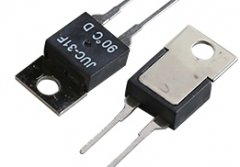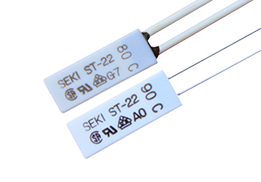Consultation:Cherry Lee Add:Shangchegang Industrial,Hengli Twon, Dongguan City,Guangdong Province, China
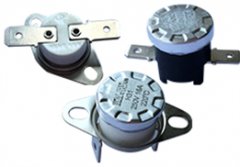


KSD301 bimetallic thermostat
(1)触点形式:常开、常闭
(2)触点容量:(10A/120VAC 5A/250VAC;15A/120VAC 10A/250VAC)
(3)常态接触电阻≤50mΩ
(4)绝缘电阻≥100mΩ
(5)温度范围:50~150度
KSD301 thermostat / bimetal thermal protector / KSD301 temperature protector
1. KSD301 temperature protector’s Principle and structure
The main principle of KSD series thermostat is that one function of bimetal discs is snap action under the change of sensing temperature. The snap action of disc can push the action of the contacts through the inside structure, and then caused on of off the circuit finally. The main characteristic are the fixation of working temperature, the reliable snap action, less flashover longer working life and less radio interference.
2. KSD301 thermostat’s specification
2.1. Electrical Rating: AC 125V max 15A; AC250V 5A 10A 15A max 16A
2.2. Action Temperature: 0~250 degree
2.3. Recovery and action temperature difference: 10 to 25 degrees, or according to client's request.
2.4. Temperature deviation: ±3 / ±5 / ±10 degree or according to client's request
2.5. Circuit resistance: ≤50mΩ (Initial value)
2.6. Insulation resistance: ≥100mΩ (DC500V Normal State)
2.7. Dielectric Strength: AC50Hz 1500V / min, no breakdown blinding (Normal State)
Life cycle: ≥100000
2.8. Normally closed or open
2.9. Two kinds of mounting bracket: movable or immovable
2.10. Terminal
a. Terminal type: 187series of 4.8*0.5mm and 4.8*0.8mm, 250 series of 6.3*0.8mm
b. Terminal Angle: bending angle: 0~90°C optional
2.11. Two kinds of body: plastic or ceramic.
2.12. Two kinds of temperature sensor face: aluminum cap or copper head.
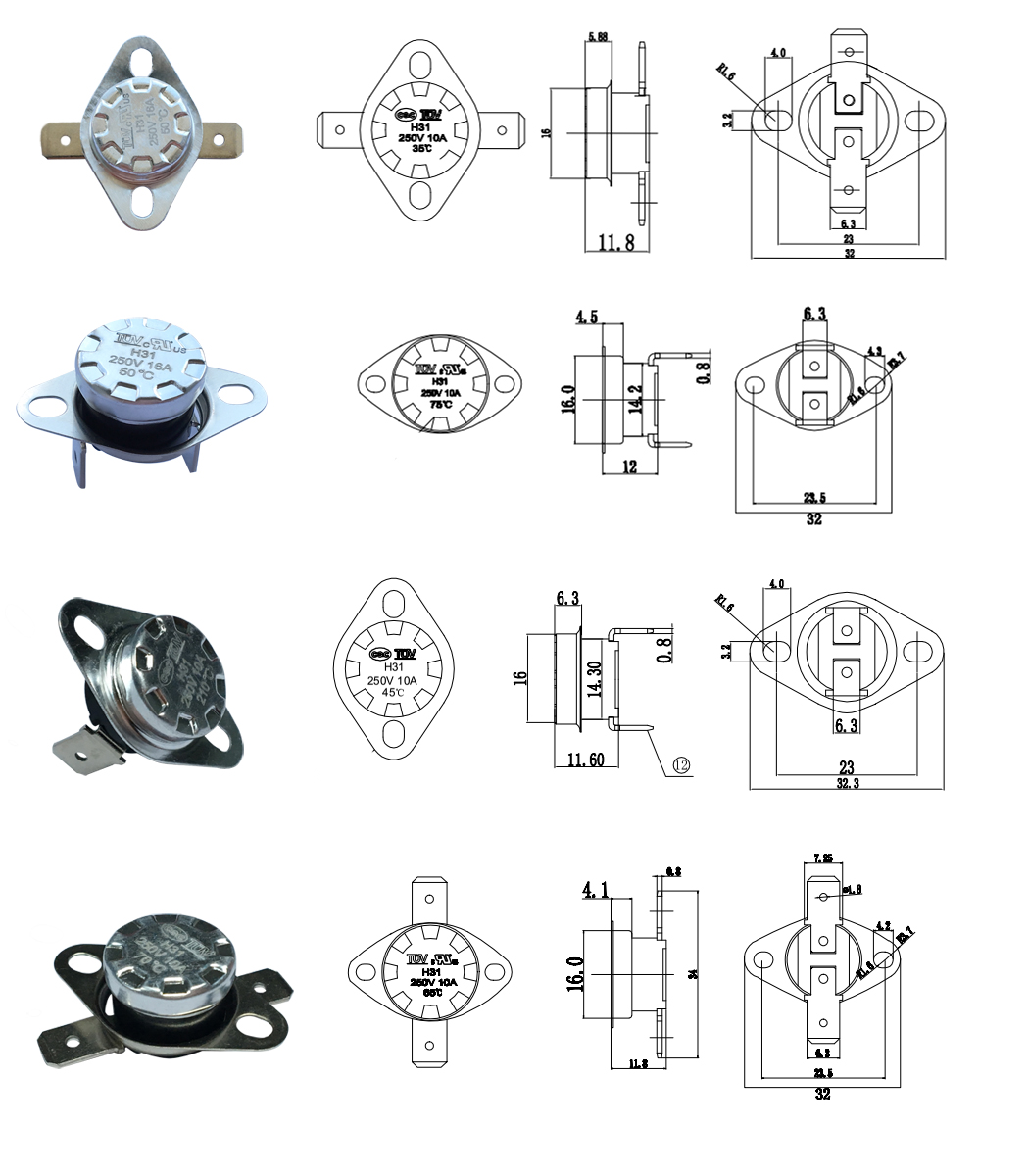
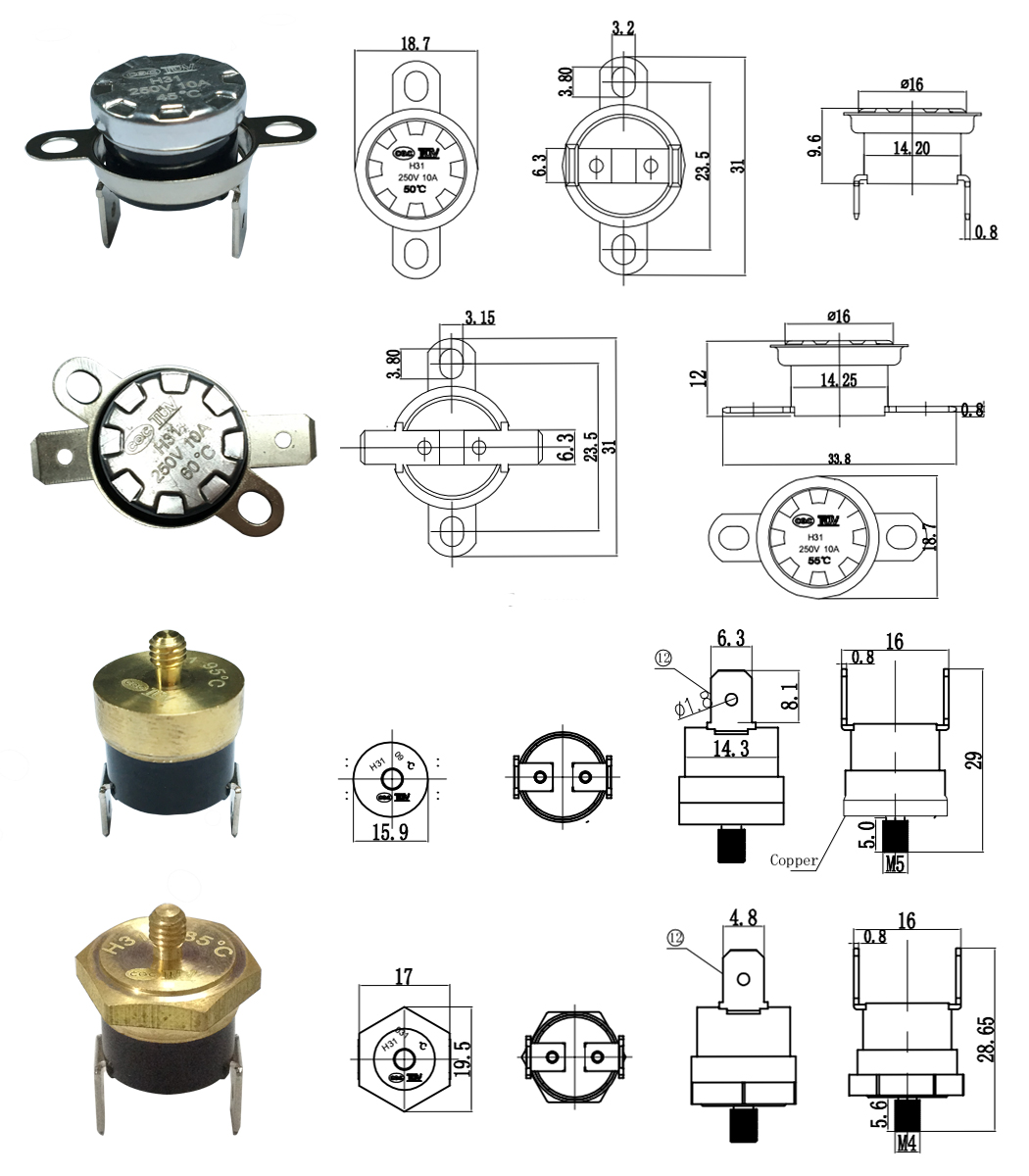
3. Difference of auto reset type and Manual reset type
3.1. Manual reset type: Temperature sensing components consist of bimetallic strip. When the temperature reached the action temperature range, it will jump quickly and the movable disc disconnects. When the temperature declines to a fixed temperature point, the contact point cannot reset until reconnecting the circuit by pushing the reset button. And then the contact points recover, reaching a purpose of connecting or disconnecting the circuit and restarting the circuit by manual reset. (Kindly reminder: 1.This type of manual reset thermostat can reset when the temperature declines 20 °C after snap action by pressing the reset button. And 4~6 N will be advisable; please don’t use too much strength. 2. To ensure the normal function, the distance between the reset button and the close cover should not be less than 20.4mm. )
3.2. Manual reset type: Temperature sensing components consist of bimetallic strip. When the temperature reached the action temperature range, it will jump quickly and the movable disc disconnects. When the temperature declines to a fixed temperature point, the contact point can auto reset and start working.
4. KSD301 bimetal thermostat’s Application
It is used as temperature control for household electric appliances and widely applied in coffee pots, automatic toasters, laminators, electric water pots, steam guns, steam irons, wind warmers, microwave ovens, water dispensers, etc.
| Open temp. | Reset temp. | Open temp. | Reset temp. | Open temp. | Reset temp. |
| -20℃+-5℃ | 5℃+-5℃ | 95℃+-5℃ | 80℃+-5℃ | 205℃+-5℃ | 175℃+-10℃ |
| -15℃+-5℃ | 5℃+-5℃ | 100℃+-5℃ | 80℃+-10℃ | 210℃+-5℃ | 180℃+-10℃ |
| -10℃+-5℃ | 5℃+-5℃ | 105℃+-5℃ | 85℃+-10℃ | 215℃+-5℃ | 185℃+-10℃ |
| 0℃+-5℃ | -10℃+-5℃ | 110℃+-5℃ | 90℃+-10℃ | 220℃+-5℃ | 190℃+-10℃ |
| 5℃+-5C | -5℃+-5℃ | 115℃+-5℃ | 95℃+-10℃ | 225℃+-5℃ | 195℃+-10℃ |
| 10℃+-5℃ | 0℃+-5℃ | 120℃+-5℃ | 100℃+-10℃ | 230℃+-5℃ | 200℃+-10℃ |
| 15℃+-5℃ | 5℃+-5℃ | 125℃+-5℃ | 105℃+-10℃ | 235℃+-5℃ | 205℃+-10℃ |
| 20℃+-5℃ | 5℃+-5℃ | 130℃+-5℃ | 110℃+-10℃ | 240℃+-5℃ | 210℃+-10℃ |
| 25℃+-5℃ | 10℃+-5℃ | 135℃+-5℃ | 115℃+-10℃ | 245℃+-5℃ | 215℃+-10℃ |
| 30℃+-5℃ | 15℃+-5℃ | 140℃+-5℃ | 120℃+-10℃ | 250℃+-5℃ | 220℃+-10℃ |
| 35℃+-5℃ | 20℃+-5℃ | 145℃+-5℃ | 125℃+-10℃ | 255℃+-5℃ | 225℃+-10℃ |
| 40℃+-5℃ | 25℃+-5℃ | 150℃+-5℃ | 130℃+-10℃ | 260℃+-5℃ | 230℃+-10℃ |
| 45℃+-5℃ | 30℃+-5℃ | 155℃+-5℃ | 130℃+-10℃ | 265℃+-5℃ | 235℃+-10℃ |
| 50℃+-5℃ | 35℃+-5℃ | 160℃+-5℃ | 135℃+-10℃ | 270℃+-5℃ | 240℃+-10℃ |
| 55℃+-5℃ | 40℃+-5℃ | 165℃+-5℃ | 140℃+-10℃ | 275℃+-5℃ | 245℃+-10℃ |
| 60℃+-5℃ | 45℃+-5℃ | 170℃+-5℃ | 145℃+-10℃ | 280℃+-5℃ | 250℃+-10℃ |
| 65℃+-5℃ | 50℃+-5℃ | 175℃+-5℃ | 150℃+-10℃ | 285℃+-5℃ | 255℃+-10℃ |
| 70℃+-5℃ | 55℃+-5℃ | 180℃+-5℃ | 155℃+-10℃ | 290℃+-5℃ | 260℃+-10℃ |
| 75℃+-5℃ | 60℃+-5℃ | 185℃+-5℃ | 155℃+-10℃ | 295℃+-5℃ | 265℃+-10℃ |
| 80℃+-5℃ | 65℃+-5℃ | 190℃+-5℃ | 160℃+-10℃ | 300℃+-5℃ | 270℃+-10℃ |
| 85℃+-5℃ | 70℃+-5℃ | 195℃+-5℃ | 165℃+-10℃ | or according to client's request | |
| 90℃+-5℃ | 75℃+-5℃ | 200℃+-5℃ | 170℃+-10℃ | ||
The product UL,CQC,TUV and RoHS certification approval.
UL: E487478
TUV: B150592241001 Rev.01
CQC15002129343
CQC15002129356


